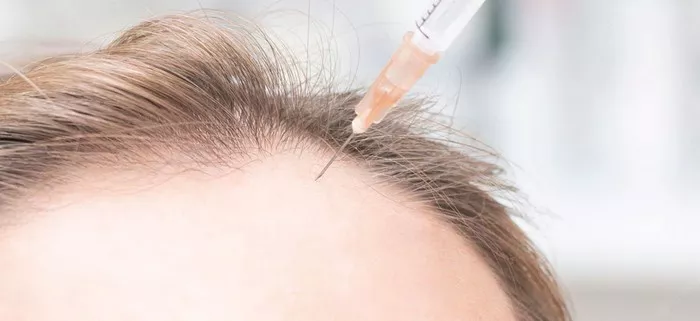Hair transplants have become an increasingly popular solution for those seeking to combat hair loss. The procedure involves moving hair from a donor area, typically the back or sides of the scalp, to the thinning or balding regions. Understanding what happens to the donor area is crucial for anyone considering this surgery. In this article, we will explore 7 key changes that occur in the donor area post-transplant.
1. Initial Healing and Scabbing
The first few days after a hair transplant are critical for the donor area. Immediately after the procedure, small scabs will form around the tiny incisions made to extract the hair follicles. This is a normal part of the healing process.
Formation of Scabs
Scab Formation: Small scabs form around each incision, protecting the wounds.
Healing Process: These scabs generally fall off within 7-10 days.
Care Instructions
Gentle Washing: Patients are usually advised to wash the area gently to avoid disturbing the scabs.
Avoiding Irritation: It is important to avoid scratching or picking at the scabs to prevent infection and promote proper healing.
2. Redness and Inflammation
Redness and mild inflammation are common in the donor area after a hair transplant. This is due to the body’s natural response to the minor trauma caused by the incisions.
Redness
Immediate Redness: The donor area will appear red and inflamed immediately after the surgery.
Duration: This redness typically subsides within a few days to a week.
Inflammation
Swelling: There might be slight swelling in the donor area, which usually reduces within a few days.
Pain Management: Over-the-counter pain relievers and anti-inflammatory medications may be recommended to manage discomfort.
See Also: 6 Reasons Hair Transplants Are Permanent
3. Scarring
Scarring is an inevitable part of the healing process in the donor area. The extent and visibility of scarring depend on the technique used and the individual’s healing characteristics.
Follicular Unit Transplantation (FUT)
Linear Scar: FUT involves removing a strip of scalp, resulting in a linear scar.
Suturing: The wound is closed with sutures, which are removed after about 10-14 days.
Scar Visibility: The scar can be noticeable if the hair is cut very short but is usually well-hidden under surrounding hair.
Follicular Unit Extraction (FUE)
Tiny Dot Scars: FUE involves extracting individual follicles, leaving tiny dot scars.
Less Visible: These scars are generally less visible and heal quicker compared to FUT scars.
4. Numbness and Sensation Changes
Temporary changes in sensation, including numbness or tingling in the donor area, are common after a hair transplant.
Numbness
Cause: Nerve endings are disrupted during the extraction process, leading to numbness.
Duration: This numbness can last from a few weeks to several months but usually resolves on its own.
Sensation Changes
Tingling or Itching: As the nerves heal, patients may experience tingling or itching sensations.
Gradual Improvement: Sensation gradually returns to normal as the healing process progresses.
5. Hair Regrowth in the Donor Area
Hair regrowth in the donor area is another critical aspect of post-transplant recovery. While the donor area will experience some hair thinning, it often remains dense enough to cover the extraction sites.
Hair Regrowth Process
Initial Shedding: Hair in the donor area may shed initially due to shock loss.
Regrowth Timeline: Hair typically begins to regrow within a few months and continues to improve over a year.
Factors Affecting Regrowth
Donor Density: Areas with higher hair density provide better coverage post-extraction.
Extraction Method: FUE tends to have a quicker and more even regrowth pattern compared to FUT.
6. Post-Operative Care and Maintenance
Proper post-operative care is crucial to ensure optimal healing and regrowth in the donor area. Following the surgeon’s instructions can significantly impact the outcome.
Immediate Post-Op Care
Cleaning: Gentle cleaning to remove any dried blood and keep the area hygienic.
Medication: Use of prescribed antibiotics and anti-inflammatory medications to prevent infection and reduce swelling.
Long-Term Care
Hair Care Routine: Patients should follow a recommended hair care routine to promote healing.
Avoiding Trauma: Avoiding activities that might stress the scalp, such as heavy exercise, for a few weeks post-surgery.
7. Long-Term Changes and Final Appearance
The donor area’s final appearance can vary based on several factors, including the surgical technique used, the individual’s healing process, and how well post-operative instructions were followed.
Scar Maturity
Scar Fading: Over time, scars mature and may become less noticeable.
Camouflaging Techniques: Techniques such as scalp micropigmentation can help camouflage scars if they are bothersome.
Hair Density
Maintained Density: Most patients retain enough hair density in the donor area to maintain a natural appearance.
Long-Term Care: Continued care and possibly additional treatments can help maintain the overall health and appearance of the hair.
Conclusion
Understanding what happens to the donor area of a hair transplant is essential for setting realistic expectations and ensuring a smooth recovery. From initial healing and scabbing to long-term changes in appearance, each step in the process plays a vital role in the overall success of the transplant. By following post-operative care instructions and maintaining proper hair care routines, patients can achieve optimal results and enjoy a fuller, more natural-looking head of hair.
Related topics:

